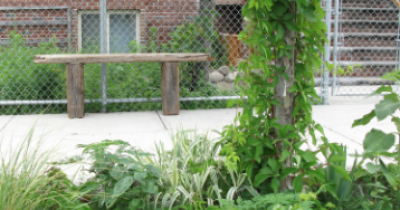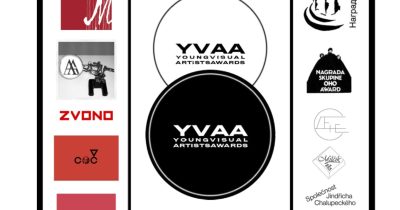Katharina Maria Raab
SONYA SCHÖNBERGER
Den Trümmern zum Trotze
Opening: 8.9.2017 — 18:00
9.9.—28.10.2017
Shortlisted for the VBKI-Preis Berliner Galerien 2017
This exhibition combines two groups of work: “Den Trümmern zum Trotze”, a series of photos about Berlin’s artificial hills of rubble which have been taken since 2012, and a project that was created during the artist’s stay in Israel entitled: “A Bengali Ficus, a German Emperor and an Ardent Zionist Encounter a Poor Photographer”. As is the case with the artist’s earlier works, the focus of both groups of work is on searching for traces of history at the respective sites. Sonya Schönberger’s works are built on academic research and bring the seemingly secondary and lost into the foreground while questioning historical events and rewriting history based on the fragments. Sonya Schönberger is interested in the tension between history and stories. She studied ethnology and experimental media design and her work often moves between visual and performing art, deploying the widest range of media. As was the case with earlier groups of work, in this exhibition Sonya Schönberger also decided to use the Agfa box camera to take pictures.
“Den Trümmern zum Trotze” In the 1950s, city planners and landscape architects began planting Berlin’s 14 artificial hills made from rubble. They chose trees and plants that grow quickly, with roots that would be able to adapt to the artificial subsoil of rubble and debris. The growth of these trees and plants was a way of showing it’s all water under the bridge. Today, these hills of rubble can barely be distinguished from natural rises in the ground. The parks that were created on them appear innocent, only revealing a little of their forgotten history when erosion brings shards of glass, ceramics or porcelain up to see the light of day. During her walks on these artificial hills, Sonya Schönberger directed her gaze downwards, searching for these traces. But she also looked upwards, showing us what grows out of the rubble.
“A Bengali Ficus, a German Emperor and an Ardent Zionist Encounter a Poor Photographer” In 1888, a banyan tree was planted in the grounds of Palestine’s first Jewish agricultural college, the Mikve Israel in Holon. Today, it is one of Israel’s best-known trees. The aerial roots of this epiphyte, imported from India by the British, thicken upon contact with the ground and assume trunk-like form, which in turn sprout upwards. In this manner, the tree has today developed into a small wooded area. It was here that, in 1898, German Emperor Wilhelm II and Theodor Herzl, the central mastermind and active pioneer of a modern Jewish state, met. Herzl travelled there with a Zionist delegation to present the Kaiser with his concerns. His high expectations are clear from his diary entry a few days before the Kaiser’s arrival: “Being under the protectorate of this strong, mighty, moral, magnificently-managed, tightly-organised Germany can only have the most beneficial effects on the character of the Jewish people. In one fell swoop, we will achieve a perfectly orderly internal and external legal status.” Although the meeting was extraordinarily frosty, Herzl hoped for later recognition. To secure his place in history, he had the photograph of the meeting, which was produced by David Wolffsohn, his companion and later successor as president of the Zionist World Organisation, manipulated. As only one of Herzl’s feet could be seen in the original photograph, Herzl had a collage produced in which he appeared closer to the Kaiser.
Agfa Box Camera As with her earlier works, Sonya Schönberger decided to use an Agfa box camera for the two groups of works “Den Trümmern zum Trotze” and “A Bengali Ficus, a German Emperor and an Ardent Zionist Encounter a Poor Photographer”. In using this very basic camera, which was developed between 1930 and 1957, she had to relinquish control. The viewfinder only shows a very approximate view of the area being photographed, and the pictures are also subject to further displacement, as the camera is held at waist height when triggered. The artist is not able to regulate the light exposure or focus. What’s more, she also uses films that have already passed their ‘use by’ date, which also affects the colours. The photos are therefore not sharply delineated documents, but subjective snapshots, similar to the eyewitness accounts with which the artist often works. Sonya Schönberger’s decision to photograph historic sites using this technique links in disconcertingly with the ‘Homeland Photography Decree’ issued by Agfa’s cultural department in 1930. Together with the Prussian Ministry of Culture, they decided to give cameras to outstanding school students. Under the title ‘School Students’ Practical Exercise in Photography’, it was emphasised that the object of the exercise was to show “first and foremost, the valuable fruits of the homeland that Nature has given us… The objects of the photographic recording should primarily be natural monuments present in the immediate homeland, particularly venerable trees…”



